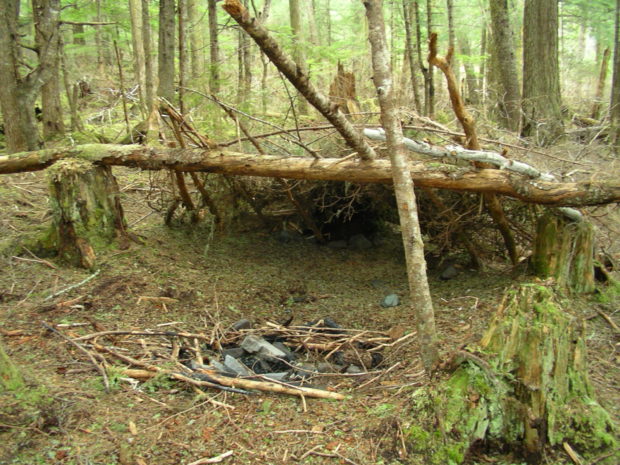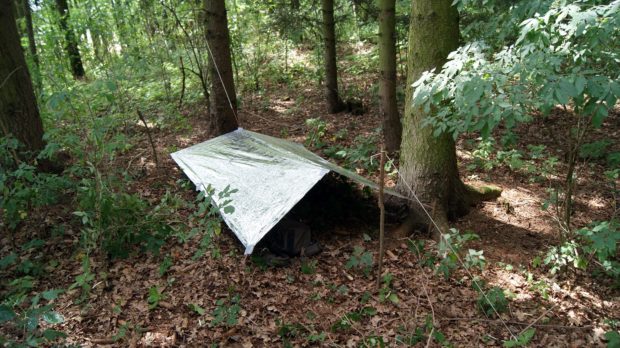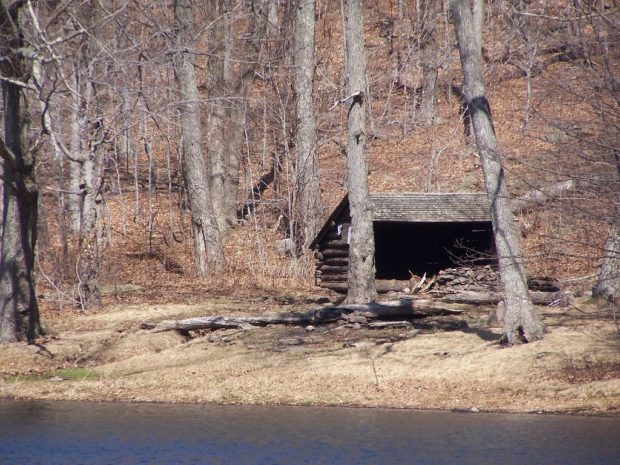Shelter is the main issue any person should be most concerned about when finding themselves in a struggle for survival. Without shelter from the elements, the ideas of sleep, cleanliness and any form of protection immediately go out the window. This goes doubly for food, as it will be impossible to cook or store food without proper shelter from weather, bugs or woodland mammals.
Emergency shelters can come in a plethora of different ways:
A dugout or tunnel in some cases, is a simple way to create a basic shelter in an area with very little brush and coverage. All it requires is a shovel (or something to dig with) and a tarp to cover. Obviously, you’ll need items hold the edges down, so if all else fails, rocks can do the job.
Of course, like all improvisions, this shelter needs to be consistently expanded upon, as your number one enemy with any shelter is rain/water/moisture. This is why you’ll need to build drainage. Simply put, dig deeper in a corner of your dugout to create an area for water to escape to, instead of building up in your sleeping area.
This is akin to a trench drain which has both modern application as well as historic (think trench warfare in WW1 and WW2). Ever-expanding, if you can create an opening on just one side of any shelter, this will easily maximize coverage as you can cover the rest with sticks, brush, leaves and any other natural insulation you can gather.

Improvised shelters can become quite weatherproof over time. (creative commons)
Ideally you’ll have a stick to elevate your tarp so that water runs off the sides easier, this is especially preferable for an above ground tarp shelter. Requiring only your tarp, strings and some sticks for stability, a tarp shelter can be elevated as low or high as you wish to create the desired size of space underneath. Simply tie your outstretched tarp to secure bases, most often trees, making sure your knots are tight and the tarp taut enough so that water doesn’t gather on top, eventually collapsing it.

A tarp cover is as easy as tying it to trees. (creative commons)
Ideally, you’ll want to secure all corners to ensure your shelter doesn’t take off running when wind picks up. Staking down the corners whilst propping up the middle is referred to as a ‘wedge tarp’, with tough string or (ideally) paracord used to tie it off the tarp itself.
Important things to remember include elevating your bedding area. No matter what climate you’re in, if you can elevate your ‘sleeping quarters’ in any way to avoid bugs or snakes, you should do so. Most importantly this will keep you dry if any water collects or puddles during sleep or while you’re away. Storing your clothes and food above ground is also paramount. But do remember that if you are in area where bears are seen to keep your food a fair distance away from you, because Yogi doesn’t discriminate between meals.
Another form of emergency shelter is called a lean-to. Traditionally, a lean-to does just what you’d expect; it leans against a natural or unnatural surface to provide an open-ended shelter. A grouping of dense brush, rock wall, or in some cases a structure drastically cuts down on building time so that you can create shelter immediately.

A lean-to may be the best type of emergency shelter (creative commons)
With the ability to lean logs, branches or anything else you can find really (sheet metal, plywood, tarp), lean-tos are very easy to construct and mostly require camouflage to blend into the elements. While items still need to be secured, they can provide a lot of area to operate, even leaving enough vertical space to create a fire close by, without exposing it to the elements or making it visible to others.
It may sound bleak, but if you’re in a situation where an emergency shelter is needed, shielding your food, fire and obscuring the shelter overall from animal and humans should always be considered. If you possess shelter, food and fire, these are commodities that others will want.
However, if you’re unsure of what you should have with you in emergency situations, check out OutbreakProvisions.com and look into ‘bug-out’ and survival kits for a great place to start.
Lastly, in terms of emergency shelter placement, staying close to any fresh water, roadways or food source is paramount. Make your life in the wild as easy as possible as to not lug fish or wood incredible distances back to your camp. Calories burned are calories that need to be consumed.
Have a suggestion for a cool product or great deal that you think Daily Caller readers need to know about? Email our BrightBulb Team at dealer@dailycaller.com.
The Daily Caller is devoted to showing you things that you’ll like or find interesting. We do have partnerships with affiliates, so The Daily Caller may get a small share of the revenue from any purchase.

